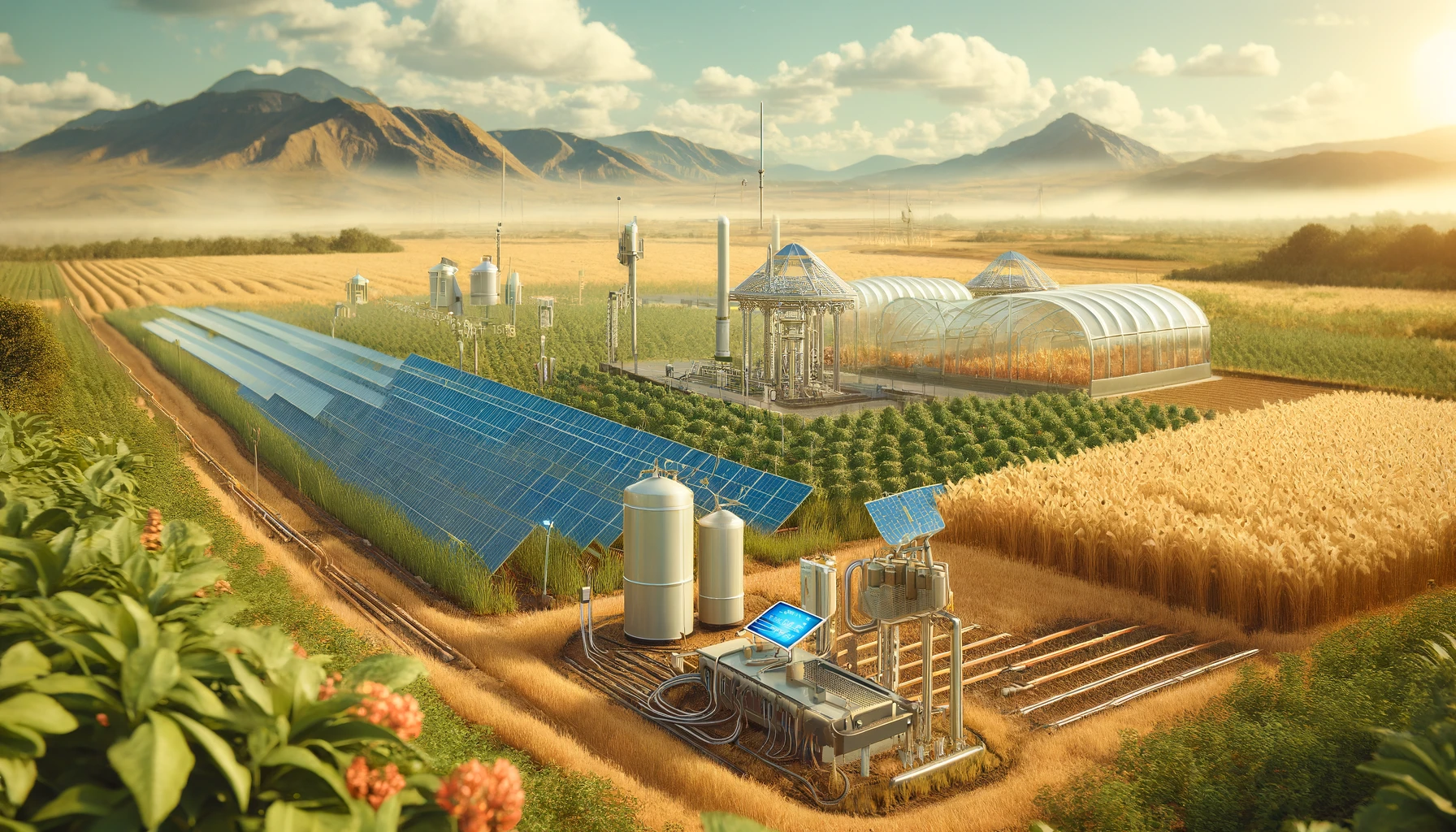Smart Agriculture: Solutions for Farming in Sub-Saharan Africa
Millions of people in this large region of the Sub-Saharan area—which is made up of 49 countries—rely mostly on agriculture. Nevertheless, farmers in this part of the world face many obstacles that limit sustainability and productivity, despite their vital role.

The Challenges of Farming in Sub-Saharan Africa
The first and foremost challenge is the unpredictable climate. The weather in Sub-Saharan Africa is notorious for being unpredictable. Long-lasting droughts, sudden floods, and irregular rainfalls may put off seeding seasons, harm crops, and endanger the supply of food. The inability of farmers to modify their customary methods in response to these changing circumstances exacerbates the susceptibility of agricultural systems.
Besides, the constrained access to modern agricultural technologies limits the region's production of food and the like. A lot of farmers prefer to use outdated equipment and methods rather than innovations, which inevitably results in low yields.
Sub-Saharan Africa also suffers from serious infrastructure challenges. Insufficient warehouses, poor transportation systems, and restricted market accessibility do not make it possible to effectively distribute their agricultural products. Farmers, hence, have problems with getting their products to customers, which results in post-harvest losses and lower profits.
Output from agriculture is constantly threatened by common diseases and pests. The weeds, diseases, and insects can cause disaster for crops, which is to result in significant yield losses and financial challenges for farmers. Thus, farmers are exposed to crop damage and food insecurity as a result of their lack of pest management expertise and resources.
The Promise of Smart Agriculture
Smart agriculture, also known as precision agriculture, harnesses cutting-edge technologies to optimize farming practices and maximize productivity..
Using statistical information to improve decision-making is smart agriculture's main aspect. Real-time information about crop growth, soil health, and weather conditions is sent to farmers via satellite, drones with imaging capabilities, and sophisticated sensors hidden in the soil.
An essential component of smart agriculture is water management, especially in areas where drought and water scarcity are common. Through precision irrigation systems, farmers can optimize water usage by delivering the right amount of water to crops at the right time. Sensors measure soil moisture levels, weather forecasts inform irrigation schedules and automated valves regulate water flow, ensuring that crops receive adequate hydration while minimizing waste. This targeted approach not only conserves water resources but also mitigates the impact of drought on agricultural productivity.
Furthermore, smart agriculture offers innovative solutions for post-harvest management, a pivotal stage in the agricultural value chain. Cold storage facilities equipped with temperature and humidity sensors help preserve perishable crops, extending their shelf life and reducing losses. Mobile applications enable farmers to track inventory, manage logistics, and access markets, facilitating efficient distribution and market access. By streamlining post-harvest processes, smart agriculture minimizes food wastage and maximizes economic returns for farmers.
The adoption of smart agriculture in Sub-Saharan Africa is gaining momentum, driven by the increasing availability and affordability of technology solutions. Mobile phone penetration is widespread across the region, providing a platform for delivering agricultural extension services, market information, and financial services to farmers. Tech startups and development organizations are partnering with local communities to pilot innovative projects that demonstrate the transformative potential of smart agriculture in improving livelihoods and resilience.

Overcoming Barriers to Adoption
While smart agriculture holds immense promise for transforming farming practices in Sub-Saharan Africa, overcoming barriers to adoption is essential to realizing its full potential. Despite the benefits of technology-driven solutions, several challenges hinder the widespread uptake of smart agriculture initiatives across the region.
One of the primary barriers is the lack of access to affordable and appropriate technology. Many smallholder farmers in Sub-Saharan Africa face financial constraints that limit their ability to invest in expensive equipment or digital tools. Additionally, limited internet connectivity and electricity infrastructure in rural areas pose further challenges to accessing and utilizing technology solutions. Addressing these barriers requires innovative financing mechanisms, public-private partnerships, and investment in rural infrastructure to ensure equitable access to technology for all farmers.
Moreover, limited awareness and knowledge about smart agriculture practices impede adoption among farming communities. Many farmers are unaware of the potential benefits of precision agriculture, soil moisture monitoring, or digital market platforms. Extension services and farmer training programs play a crucial role in disseminating information, building capacity, and promoting the adoption of innovative technologies. By investing in education and outreach, stakeholders can empower farmers to make informed decisions about adopting smart agriculture practices that improve productivity and resilience.
In addition to access and awareness, policy and regulatory frameworks also influence the adoption of smart agriculture initiatives. Inconsistent policies, bureaucratic hurdles, and a lack of supportive regulations can create barriers to innovation and investment in the agricultural sector. Governments and policymakers must create an enabling environment that incentivizes private sector investment, promotes technology transfer, and supports research and development in smart agriculture. By aligning policies with the needs and priorities of farmers, policymakers can foster an ecosystem that facilitates the uptake of smart agriculture solutions and drives sustainable agricultural development.
Furthermore, cultural and social factors can shape attitudes and perceptions towards technology adoption in agriculture. Traditional farming practices, cultural norms, and social dynamics may influence farmers' willingness to embrace new technologies and change established routines. Engaging with local communities, respecting indigenous knowledge, and involving farmers in the design and implementation of smart agriculture projects are essential for building trust and fostering acceptance. By incorporating local perspectives and promoting participatory approaches, stakeholders can ensure that smart agriculture initiatives are contextually relevant and culturally appropriate.
Overcoming barriers to adoption is crucial for unlocking the transformative potential of smart agriculture in Sub-Saharan Africa. By addressing issues related to access, awareness, policy, and culture, stakeholders can create an enabling environment that empowers farmers to harness the benefits of technology-driven solutions. Through collaborative efforts, innovation, and inclusive approaches, smart agriculture can drive sustainable agricultural development, improve livelihoods, and build resilience in the face of ongoing challenges.
Sources:
